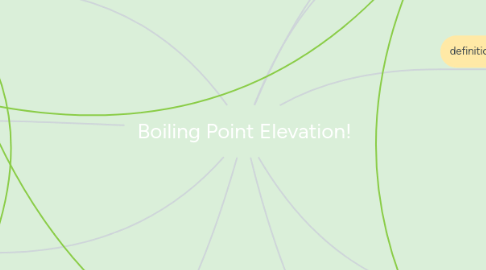Boiling Point Elevation!
von betsy Ruano


1. surface area
1.1. more surface area exposed, the higher the rate of vaporization
2. Intermolecular forces (IMF)
2.1. between particles
2.1.1. include, dispersion, dipole-dipole, ion-dipole, hydrogen bonds, and ion- ion.
3. molar mass
3.1. As the mass of a molecule increases so does the IMF in that molecule
4. Phase change
4.1. solid to liquid
4.1.1. liquid to gas
5. Formula
6. Vapor pressure
6.1. pressure exerted by a vapor in thermodynamic equilibrium with its condensed phases at a given temperature in a closed system.
6.1.1. if IMF are strong, the vapor pressure will be low. if its weak, the vapor pressure will be high.
7. definition
7.1. The boiling points of solutions are higher than that of the pure solvent. Boiling point elevation occurs whenever a non-volatile solute is added to a pure solvent-
8. colligative property
8.1. depend on the ratio of the number of solute particles to the number of solvent molecules in a solution
9. why
9.1. it lowers vapor pressure
9.1.1. the stronger the IMF the more energy required to vaporize. it takes more energy to break this bond
